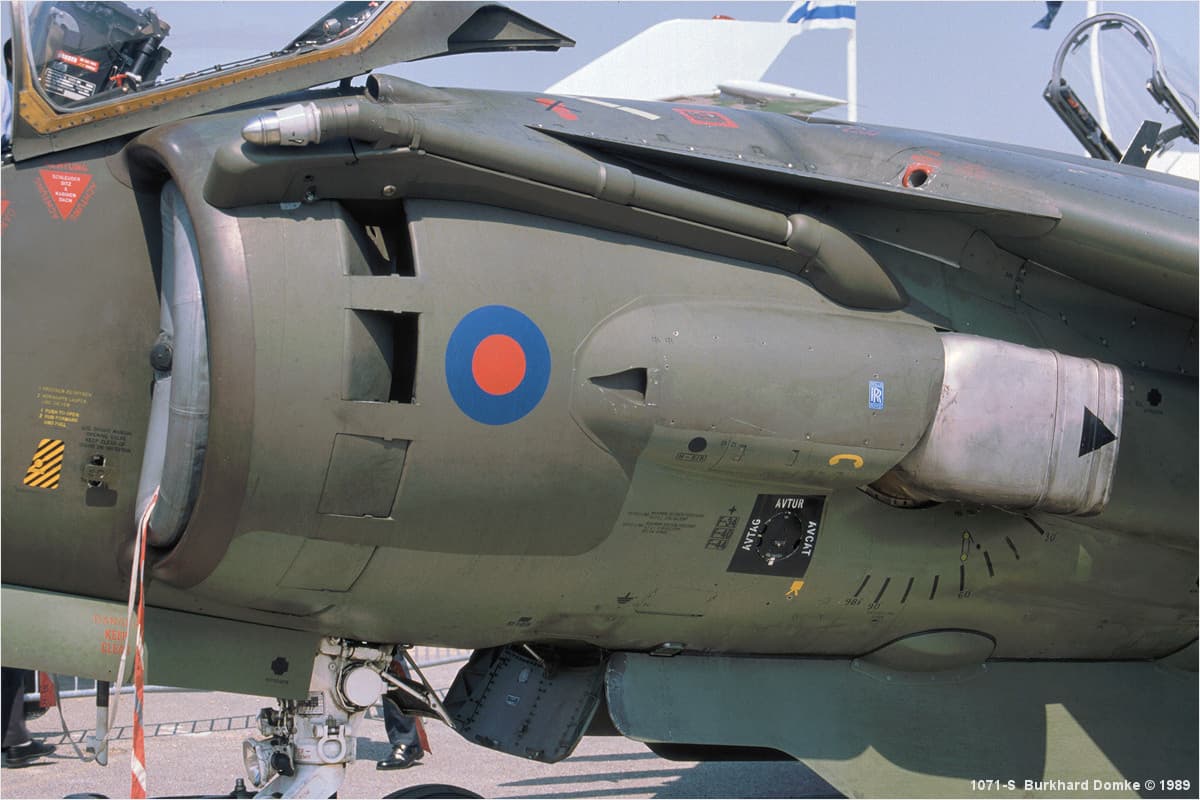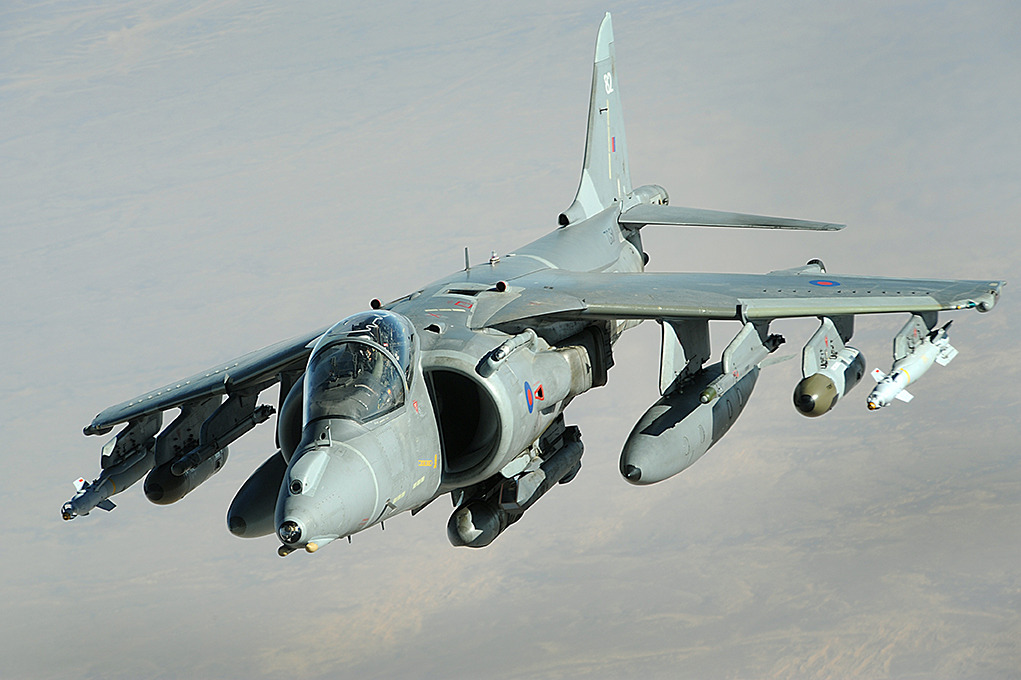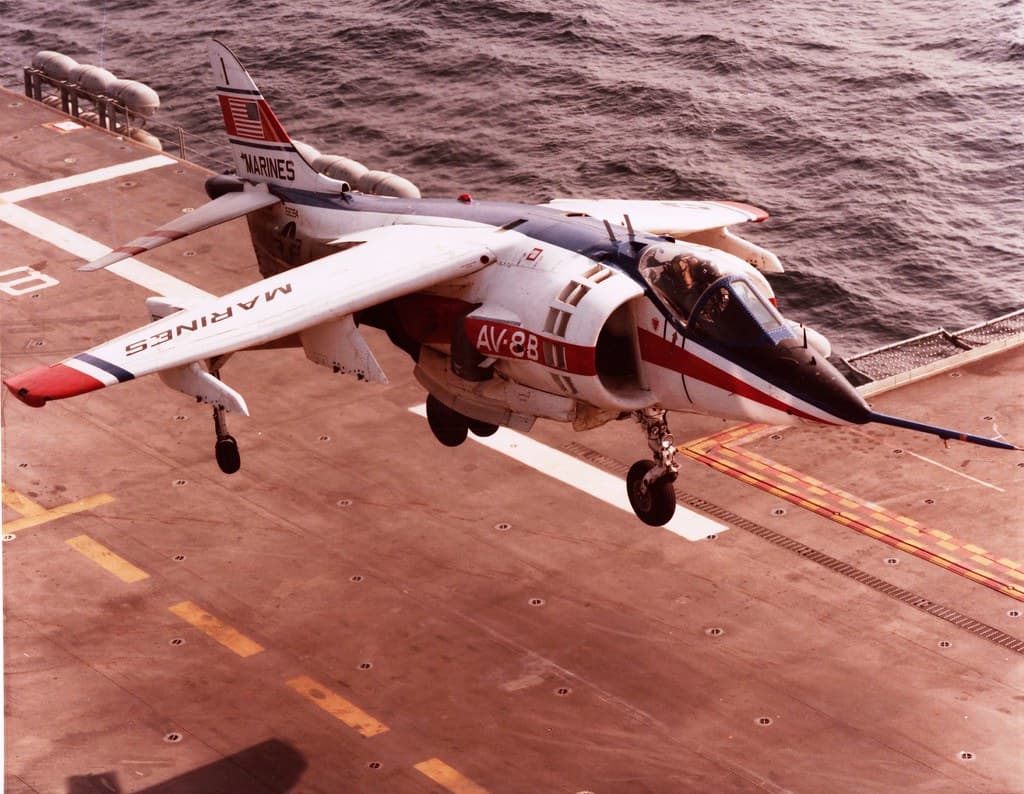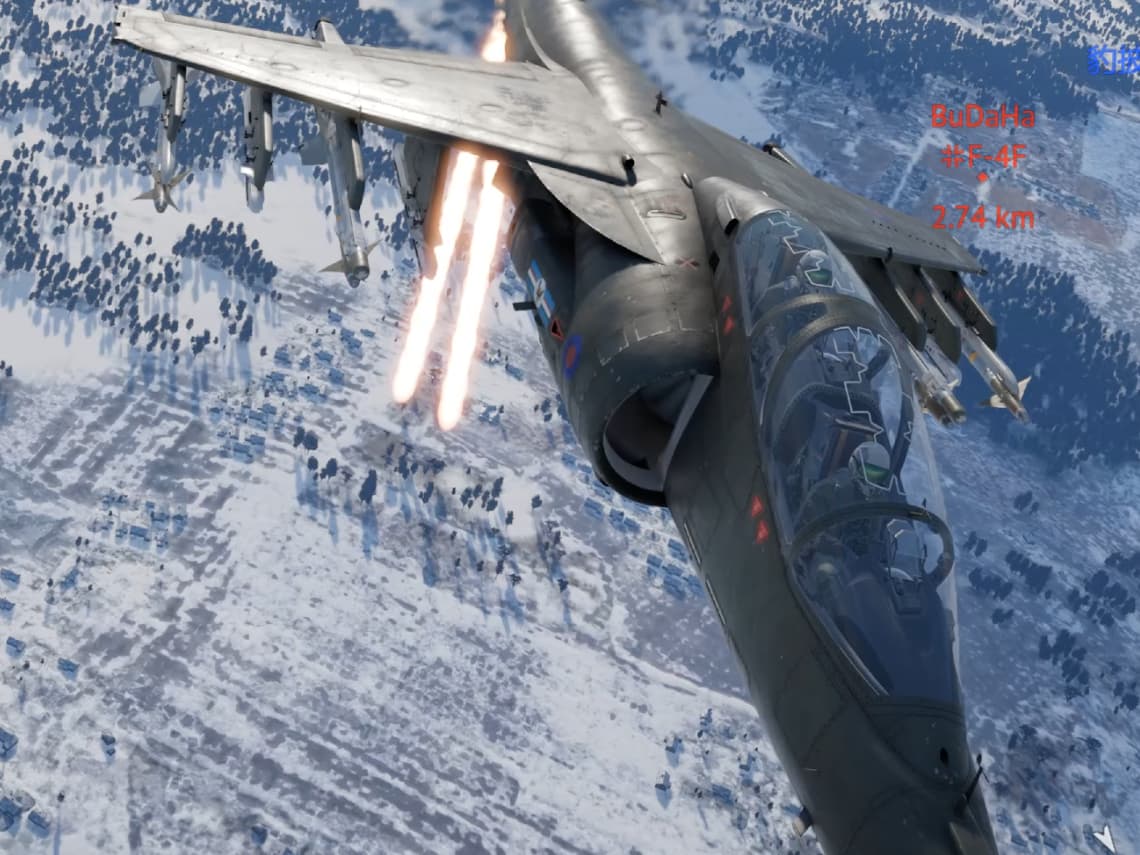That’ll do it. Thank you.
Wrong. The NA’s wing was reinforced, the British Harrier IIs all had a 25% (can’t remember the exact increase but a similar number to that) bigger wing to accommodate an extra AAM only pylon on both wings which caused a huge increase of lift. Only the Lerx on the first American Harrier IIs was 100% instead of 75% for most British Harriers
Lol what.
The wing Dimensions are the same. 22.6 meters squared.
The AV-8B can mount the same pylons, just don’t cause the American were worried about the wheels melting when firing.
Both the NA and GR.7 have 65% LERX in game. In both cases LERX was rather adhoc, with different airframes with the same designation getting different amounts of LERX.
Why be so googlably wrong?
No idea if it’s modelled in game, but the British Harrier IIs have a stiffer wing due to strengthening along the leading edge (for bird strikes), so they do handle a bit different IRL.
On the topic of the LERX: I feel like I’ve seen pictures of the very early AV-8Bs (later designated as Day Attack Harrier IIs) having a smaller LERX than the later AV-8B NAs and AV-8B Radars. Is that true, or is my brain just messing with me?
Fig. 1 - Harrier GR.5
Fig. 2 - Harrier GR.9
The Harrier 2’s were fitted with two kinds of LERX, the 65% we have in game and is pictured in Fig.1, and the 100% which we have on the AMRAAM flinger Harrier IIs, pictured in Fig.2. The 100% LERX is only compatible with later airframes as it needs some small structural changes from the factory.
The easiest way to tell the 65% and 100% LERX apart is by the “frog eyes” sticking out the top of the wing. IIRC something to do with the fire suppression system that’s embedded in the leading edge on 65% LERX models. Edit: Doesn’t apply to the twinseat harriers though.
I’m not aware of any flying without LERX though. Sorry if this wasn’t helpful.
Edit: I just checked, the US AV-8B(NA) does have the 100% LERX, so the “Early” versions you’re thinking off are probably using the 65% LERX like the British Harriers in game do
No worries, this has actually been extremely helpful! :D
As for the non-LERX Harrier II, that would only be the YAV-8B, though the two that existed were converted from AV-8Cs:
Harrier GR.9 is going to be DOA if they continue to delay adding it, would pretty much have nothing going for it over the Tornado GR.4 and Typhoon.
Harrier Gr9A will probably be fine. Im gunna assume it will retain Aim-9Ms and not ASRAAMs (but maybe its full 6 instead of the current limited 4) at like 12.7. I think id prefer it there than 14.0 because it has 4-6 ASRAAMs.
It will still be DOA with how they always make that the case for all highly wanted British aircraft
Worst-case scenario: Harrier GR.9A comes out with the same AIM-9M which GR.7 has, and armed with Gelded Brimstone-SAL. :(
12.3 in ARB and 12.0 in GRB
And A-10C Late, F-15EX, and ASRAAM-capable EFT comes out with IIR missile in the next update of that.
But I really hope that she becomes usable either ARB or GRB.
Even 4x Aim-9M. 12.3 would be fine, would render the Gr7 pointless to ever play, but at least the GR9A would be competitive.
As for GRB…
If it doesnt have MMW, it wont be usable, not in the current theatre.
I am concerned its gunna come with IIR, be forced at a BR where its barely playable (like the Sea Harrier FA2 is because “it has AMRAAM”) and then left to quitely die
Damn, that scenario is even worse than I thought…
I thought it would be more similar to the JAS39C case.
W/O ASRAAM first, and being just one step lower than IIR EFT when the IIR missile comes up. Via adding an additional research module.
Should we start whinging on the forums and have protests to get the GR.9A added for the next major update so it isn’t immediately DOA like Gaijin wants it to be?
How many large cms/small cms/normal cms can the Harrier t10 carry? Don’t have access to my computer rn so I can’t check. From the wiki I can see that it can get 216 large cms from the phimat pod, and 320 small cms through the bol rails. But how many normal cms does it get?
Also, does its maws have ranging? I saw its radar so it might have it?
60 + 2x BOL so 320 BOL.
Can have 4x BOL but gaijins has limited it to 2x for now.
And yes it can run a Phimat but not sure really why you would tbh
It’s identical to the Gr7
TACDS (V) 10 Flare Dispenser contains 60x 1" flares but as its just a ALE-47 system it could also be fit with 30x 2" flares, but Gaijin chose the 60x option for UK Harrier II’s.
TACDS (¥V) 10 Flare Dispenser - 60x
BOL-304 - 320
Phimat - 216 (chaff only)
Thanks, do you know if they’re single or double pop (would prefer double pop flares with this many cms)



